Bible Class 08
Al Krummenacher

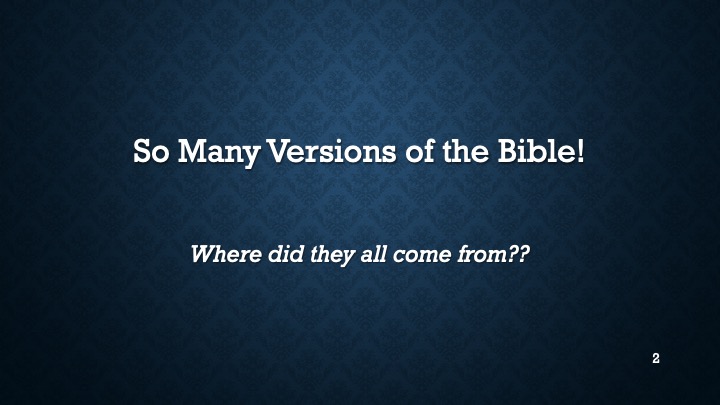

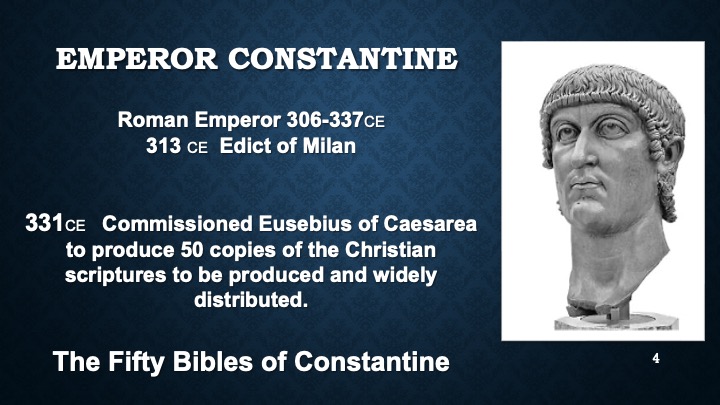
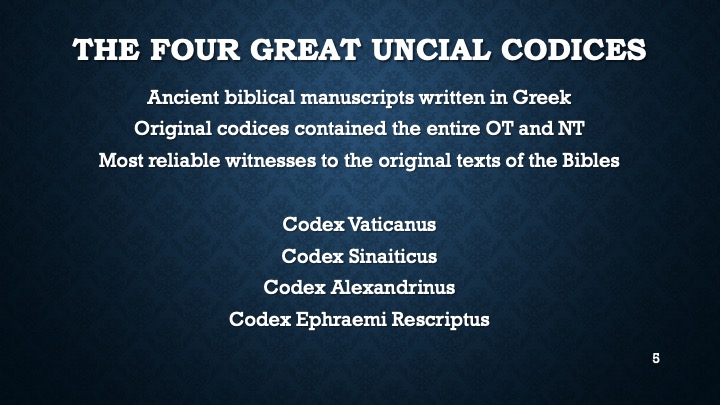
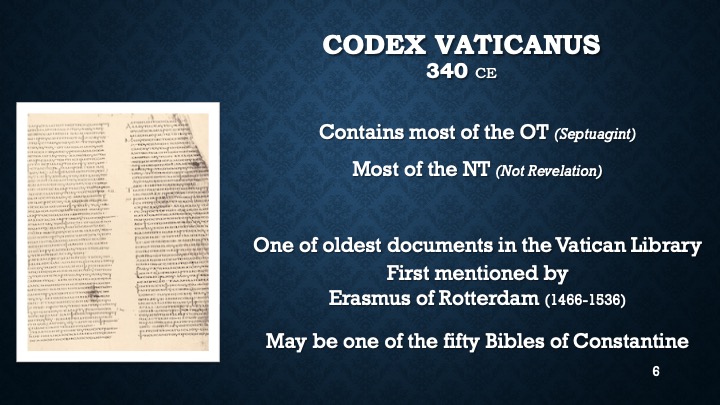
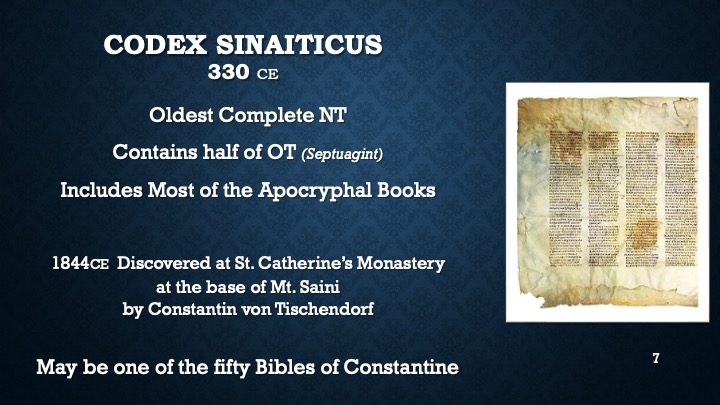
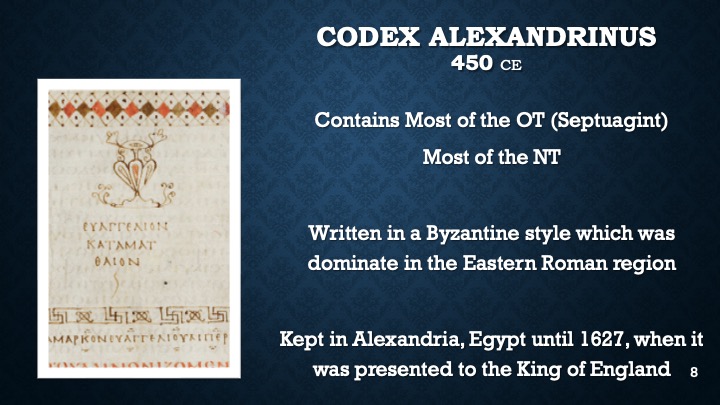
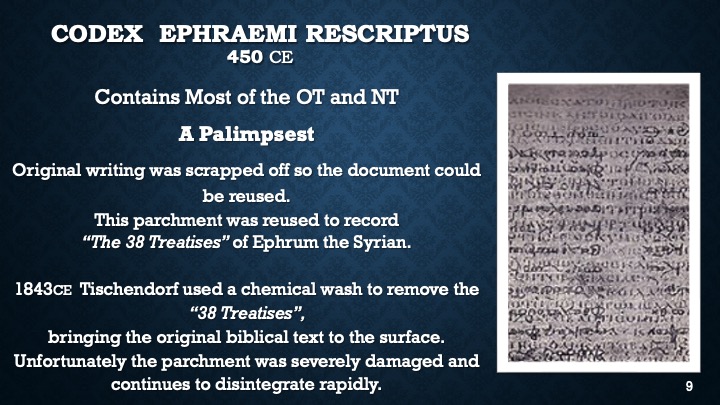
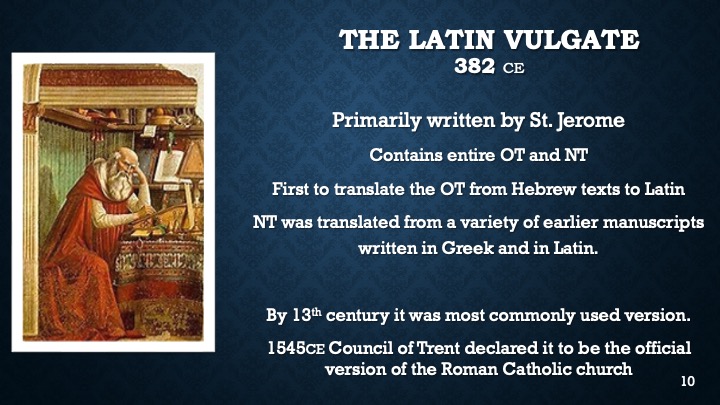
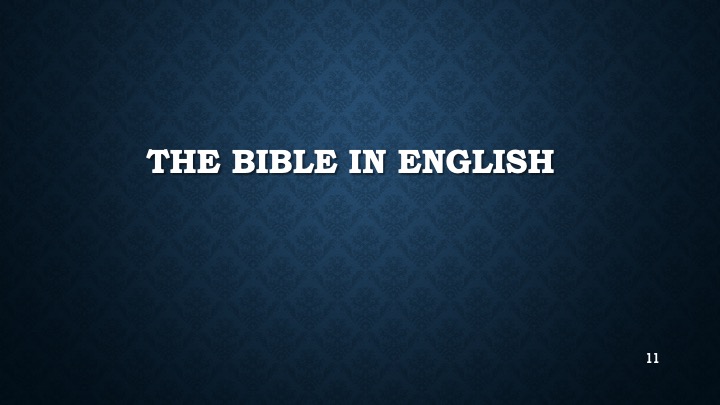
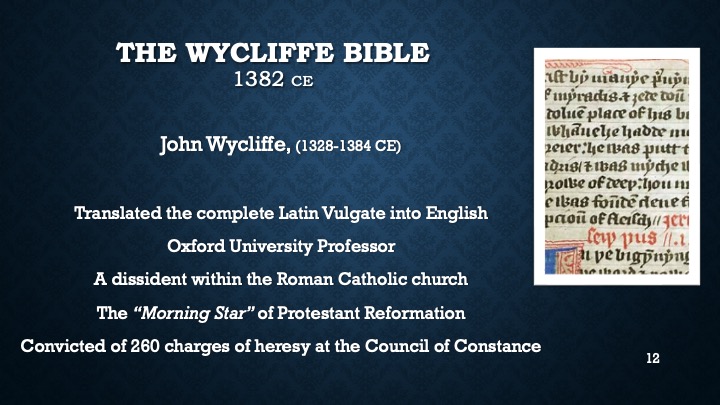
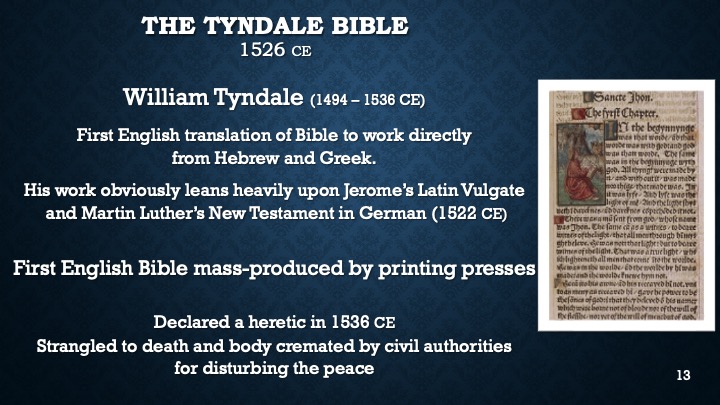
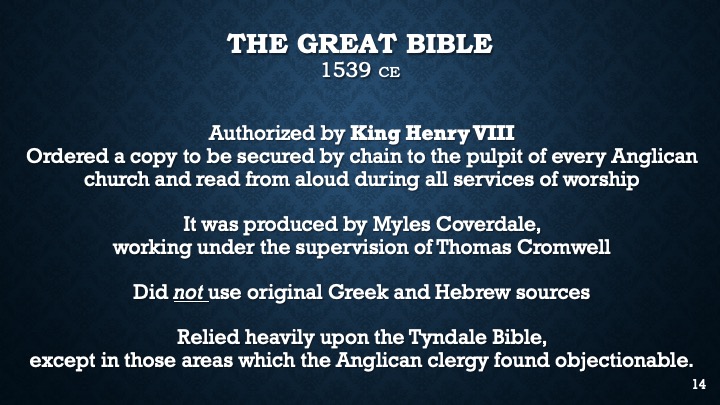
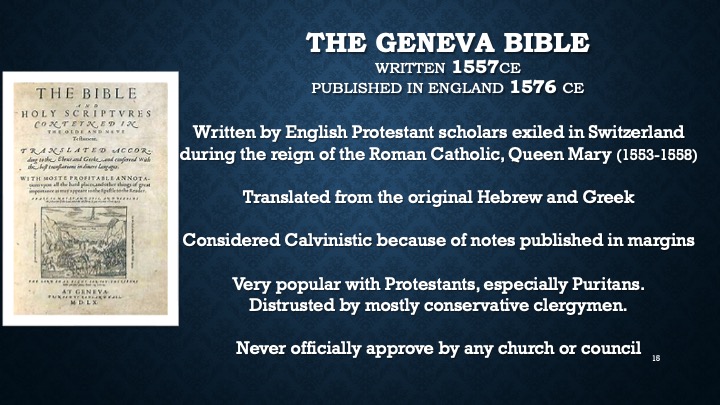
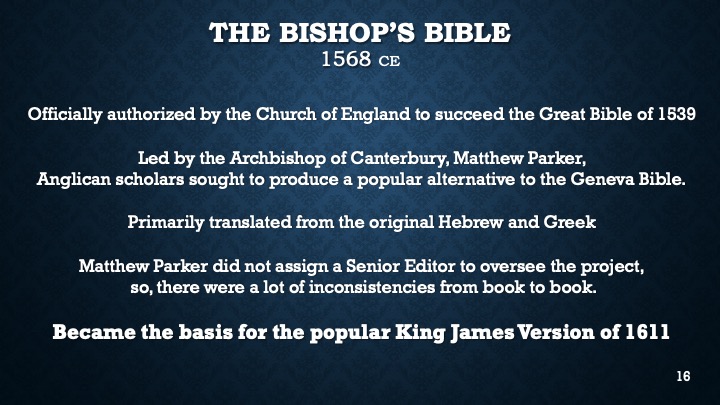
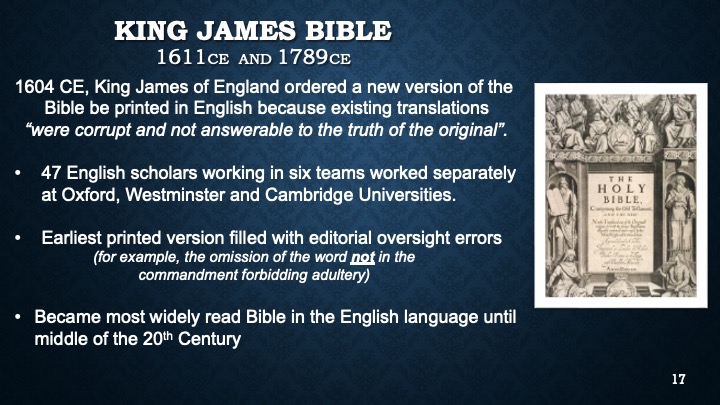
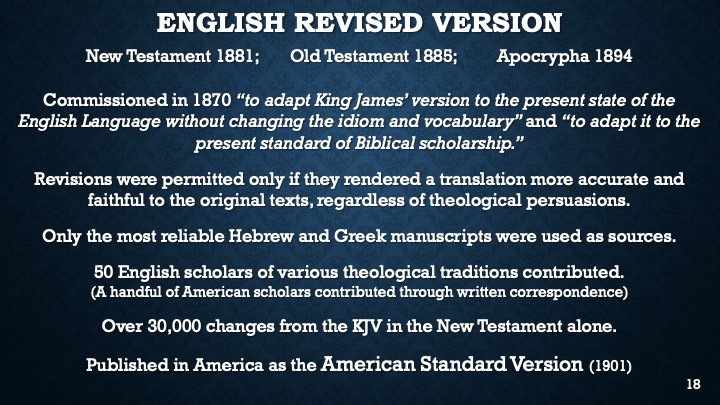
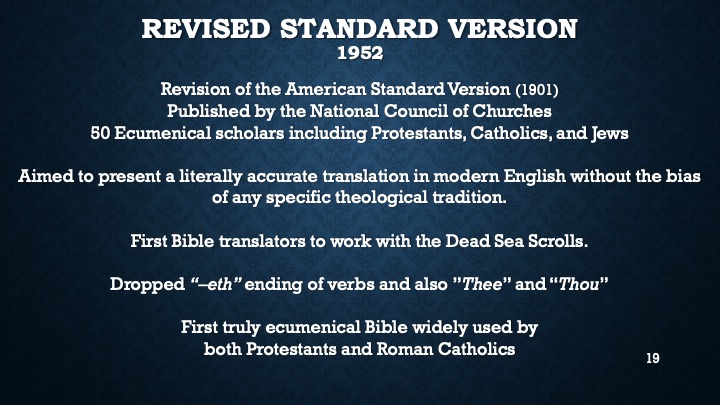
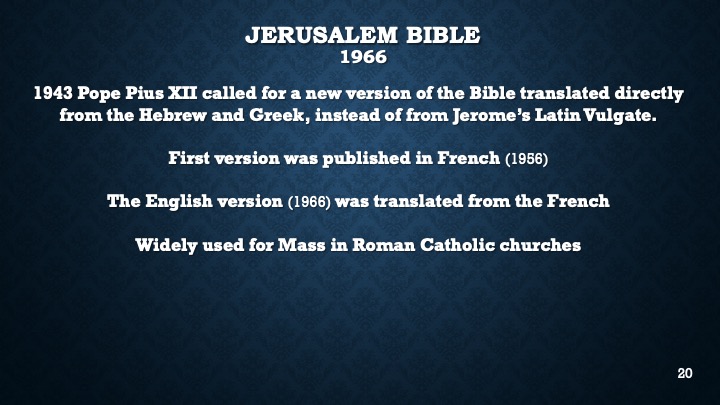
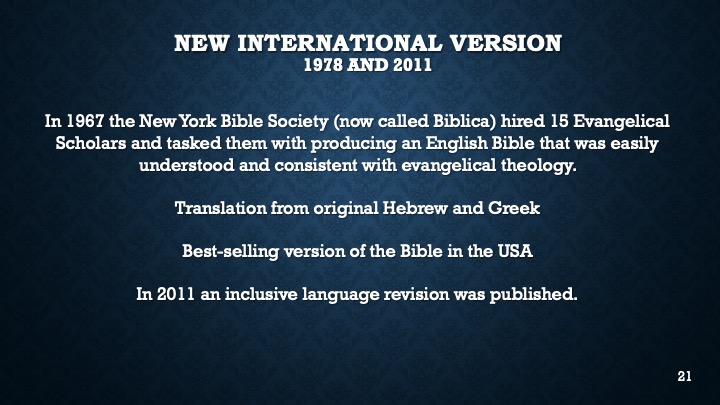
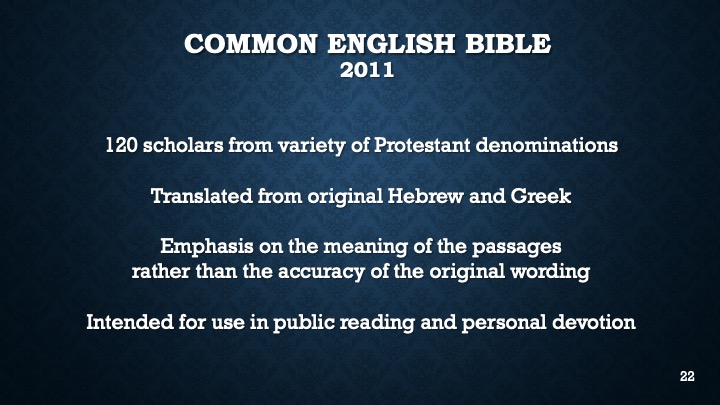
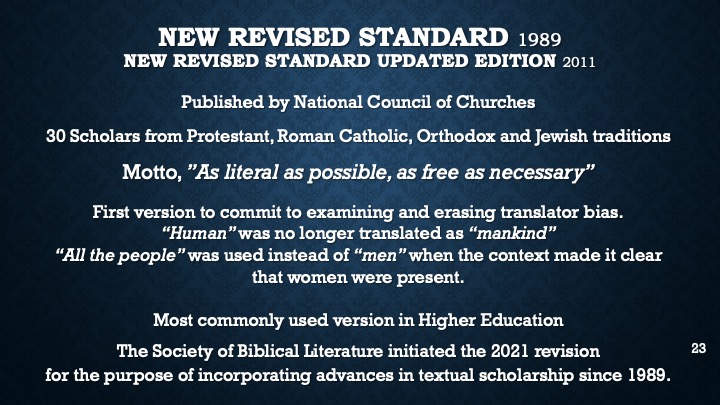

Bible Class 08
Links
< Home Page > < Top of Page >
Bible Class 08 - The Text
Know Your Bible Class 08 Text
Know Your Bible Week Eight
So Many Versions of the Bible! Where did they all come from??
Early Bibles
Emperor Constantine
Roman Emperor 306-337CE
313 CE Edict of Milan
331CE Commissioned Eusebius of Caesarea to produce 50 copies of the Christian scriptures to be produced and widely distributed.
The Fifty Bibles of Constantine
The Four Great Uncial Codices
Ancient biblical manuscripts written in Greek
Original codices contained the entire OT and NT
Most reliable witnesses to the original texts of the Bibles
Codex Vaticanus
Codex Sinaiticus
Codex Alexandrinus
Codex Ephraemi Rescriptus
Codex Vaticanus
340 CE
Contains most of the OT (Septuagint)
Most of the NT (Not Revelation)
One of oldest documents in the Vatican Library
First mentioned by
Erasmus of Rotterdam (1466-1536)
May be one of the fifty Bibles of Constantine
Codex Sinaiticus
330 CE
Oldest Complete NT
Contains half of OT (Septuagint)
Includes Most of the Apocryphal Books
1844CE Discovered at St. Catherine’s Monastery at the base of Mt. Saini
by Constantin von Tischendorf
May be one of the fifty Bibles of Constantine
Codex Alexandrinus
450 CE
Contains Most of the OT (Septuagint). Most of the NT
Written in a Byzantine style which was dominate in the Eastern Roman region
Kept in Alexandria, Egypt until 1627, when it was presented to the King of England
Codex
Ephraemi Rescriptus
450 CE
Contains Most of the OT and NT
A Palimpsest
Original writing was scrapped off so the document could be reused.
This parchment was reused to record
“The 38 Treatises” of Ephrum the Syrian.
1843CE Tischendorf used a chemical wash to remove the “38 Treatises”, bringing the original biblical text to the surface.
Unfortunately the parchment was severely damaged and continues to disintegrate rapidly.
The Latin Vulgate
382 CE
Primarily written by St. Jerome
Contains entire OT and NT
First to translate the OT from Hebrew texts to Latin
NT was translated from a variety of earlier manuscripts written in Greek and in Latin.
By 13th century it was most commonly used version.
1545CE Council of Trent declared it to be the official version of the Roman Catholic church
The Bible in English
The Wycliffe Bible
1382 CE
John Wycliffe, (1328-1384 CE)
Translated the complete Latin Vulgate into English
Oxford University Professor
A dissident within the Roman Catholic church
The “Morning Star” of Protestant Reformation
Convicted of 260 charges of heresy at the Council of Constance
The Tyndale Bible
1526 CE
William Tyndale (1494 – 1536 CE)
First English translation of Bible to work directly
from Hebrew and Greek.
His work obviously leans heavily upon Jerome’s Latin Vulgate and Martin Luther’s New Testament in German (1522 CE)
First English Bible mass-produced by printing presses
Declared a heretic in 1536 CE
Strangled to death and body cremated by civil authorities for disturbing the peace
The Great Bible
1539 CE
Authorized by King Henry VIII
Ordered a copy to be secured by chain to the pulpit of every Anglican church and read from aloud during all services of worship
It was produced by Myles Coverdale, working under the supervision of Thomas Cromwell
Did not use original Greek and Hebrew sources
Relied heavily upon the Tyndale Bible, except in those areas which the Anglican clergy found objectionable.
The Geneva Bible
Written 1557CE
Published in England 1576 CE
Written by English Protestant scholars exiled in Switzerland
during the reign of the Roman Catholic, Queen Mary (1553-1558)
Translated from the original Hebrew and Greek
Considered Calvinistic because of notes published in margins
Very popular with Protestants, especially Puritans.
Distrusted by mostly conservative clergymen.
Never officially approve by any church or council
The Bishop’s Bible
1568 CE
Officially authorized by the Church of England to succeed the Great Bible of 1539
Led by the Archbishop of Canterbury, Matthew Parker,
Anglican scholars sought to produce a popular alternative to the Geneva Bible.
Primarily translated from the original Hebrew and Greek
Matthew Parker did not assign a Senior Editor to oversee the project, so, there were a lot of inconsistencies from book to book.
Became the basis for the popular King James Version of 1611
King James Bible
1611CE and 1789ce
1604 CE, King James of England ordered a new version of the Bible be printed in English because existing translations “were corrupt and not answerable to the truth of the original”.
• 47 English scholars working in six teams worked separately at Oxford, Westminster and Cambridge Universities.
• Earliest printed version filled with editorial oversight errors (for example, the omission of the word not in the commandment forbidding adultery)
• Became most widely read Bible in the English language until middle of the 20th Century
English Revised Version
New Testament 1881; Old Testament 1885; Apocrypha 1894
Commissioned in 1870 “to adapt King James’ version to the present state of the English Language without changing the idiom and vocabulary” and “to adapt it to the present standard of Biblical scholarship.”
Revisions were permitted only if they rendered a translation more accurate and faithful to the original texts, regardless of theological persuasions.
Only the most reliable Hebrew and Greek manuscripts were used as sources.
50 English scholars of various theological traditions contributed.
(A handful of American scholars contributed through written correspondence)
Over 30,000 changes from the KJV in the New Testament alone.
Published in America as the American Standard Version (1901)
Revised Standard Version
1952
Revision of the American Standard Version (1901)
Published by the National Council of Churches
50 Ecumenical scholars including Protestants, Catholics, and Jews
Aimed to present a literally accurate translation in modern English without the bias of any specific theological tradition.
First Bible translators to work with the Dead Sea Scrolls.
Dropped “–eth” ending of verbs and also ”Thee” and “Thou”
First truly ecumenical Bible widely used by both Protestants and Roman Catholic
Jerusalem Bible
1966
1943 Pope Pius XII called for a new version of the Bible translated directly from the Hebrew and Greek, instead of from Jerome’s Latin Vulgate.
First version was published in French (1956)
The English version (1966) was translated from the French
Widely used for Mass in Roman Catholic churches
New International Version
1978 and 2011
In 1967 the New York Bible Society (now called Biblica) hired 15 Evangelical Scholars and tasked them with producing an English Bible that was easily understood and consistent with evangelical theology.
Translation from original Hebrew and Greek
Best-selling version of the Bible in the USA
In 2011 an inclusive language revision was published.
Common English Bible
2011
120 scholars from variety of Protestant denominations
Translated from original Hebrew and Greek
Emphasis on the meaning of the passages rather than the accuracy of the original wording
Intended for use in public reading and personal devotion
New Revised Standard 1989
New Revised Standard Updated Edition 2011
Published by National Council of Churches
30 Scholars from Protestant, Roman Catholic, Orthodox and Jewish traditions
Motto, ”As literal as possible, as free as necessary”
First version to commit to examining and erasing translator bias.
“Human” was no longer translated as “mankind”
“All the people” was used instead of “men” when the context made it clear
that women were present.
Most commonly used version in Higher Education
The Society of Biblical Literature initiated the 2021 revision for the purpose of incorporating advances in textual scholarship since 1989.
Know Your Bible